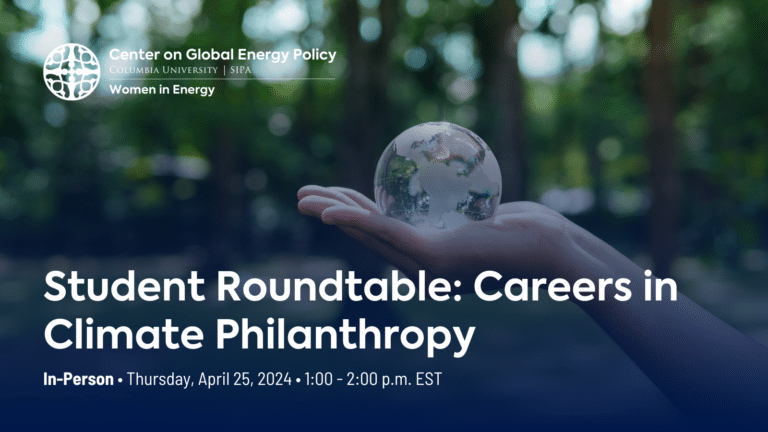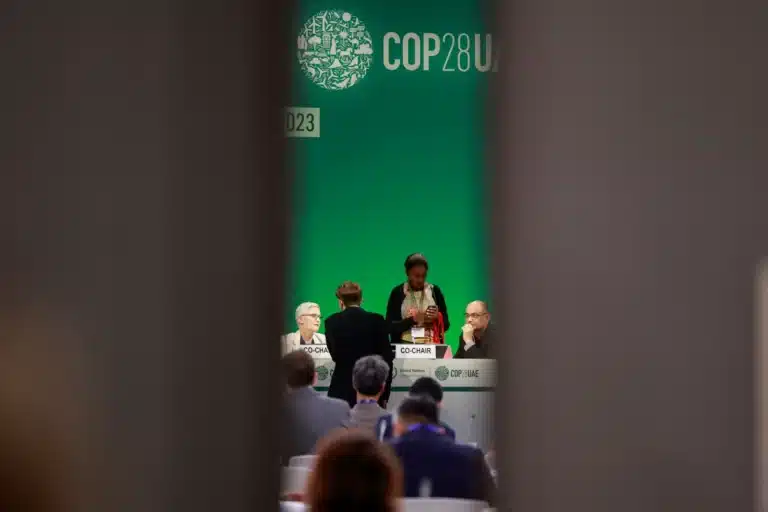In Through the Looking Glass, Alice steps through a mirror into a world in which many things are reversed. While in Beijing last week to deliver lectures on energy policy at Peking University and attend the Clean Energy Ministerial (an annual meeting of more than 20 countries hosted this year by China), I felt like I’d stepped through that mirror.
During my stay, President Trump announced the United States’ withdrawal from the Paris Agreement, a climate change accord adopted by more than 190 countries. He did so with remarks that rejected both widely-accepted science and long-accepted norms of U.S. leadership.
Meanwhile, the Chinese government reaffirmed its commitment not just to the Paris Agreement, but to market-based policies for addressing global warming. Chinese leaders unambiguously endorsed the scientific consensus on climate change. They began following up on a summit that brought leaders from dozens of countries to Beijing last month for discussions on economic development and infrastructure spending.
How did we enter a world in which the Chinese government embraces market-based policies, science-based policies and multilateral leadership, while the U.S. federal government rejects all three? From the perspective of even a few years ago, this is surprising. From the perspective of several decades ago, it is shocking.
The richest irony is perhaps with respect to emissions trading as a tool for fighting global warming. Emissions trading is an American idea that gained prominence in the 1980s as Congress considered how to respond to acid rain. The idea of buying and selling emissions allowances was a conservative, business-oriented response to command-and-control regulation–a creative way of allowing market forces to reduce the cost and accelerate the pace of environmental improvements.
When American conservatives were pushing the idea of emissions trading in the 1980s, private enterprise barely existed in China. Almost all economic activity was directed by the government. Entrepreneurship was illegal in some Chinese provinces. Three decades later, the Chinese government embraces not just private enterprise, but market-based policy tools such as emissions trading. It ran pilot emissions trading programs for heat-trapping gases in seven provinces for the past several years and will roll out the first stages of a national program this fall. But in the U.S., there is little chance the federal government will use emissions trading to help fight climate change for years to come.
The contrast with respect to science is different. The Chinese have never disrespected science.To the contrary, the Chinese tend to revere science and scientists. It is not surprising that the Chinese government would be pro-science.
But the hostility to science from the U.S. government is new – and alarming. Of the United States’ many assets, the pre-eminence of our scientific establishment stands out. From the transistor to the polio vaccine to the Internet to countless other examples, U.S. science changed the world in the past century. Presidents of both parties have strongly supported scientific research for generations. The profound disrespect shown for science by the current administration, rejecting widely-held scientific conclusions and proposing massive cuts to science research budgets, will wreak long-term damage to the United States if not reversed.
This feature of Trump administration policy, more than any other, leaves many Chinese people I spoke with bewildered. Respect for American science runs deep in China, with top faculty and millions of students seeking spots at U.S. universities. The notion that the U.S. President lacks similar respect for these institutions and declines to accept widely-accepted scientific conclusions often just doesn’t compute.
Which brings us to multilateral leadership. For generations, observers have used terms such as “leader of the free world” and “indispensable nation” to describe the United States, reflecting the U.S. role in helping lead a set of alliances and multilateral institutions that have shaped the world since the end of World War II. During much of this period, Chinese foreign policy was guided by Deng Xiaoping’s 1990 maxim to “bide our time; never try to take the lead”.
President Trump challenges this vision of the U.S. role in the world. In his rhetoric, he replaces “America is a shining city on a hill” with “America First.” During his Europe trip last month, President Trump raised deep questions about U.S. reliability with countries that have been allies for generations.
Meanwhile, in mid-May, Chinese President Xi Jinping hosted his “One Belt One Road” summit, forging ties with dozens of countries in Asia, Europe and Africa to Beijing. He offered tens of billions of dollars for financing infrastructure projects and thousands of foreign scientists to work in China. In his remarks opening the summit, President Xi emphasized “win-win cooperation,” indicating he wants to create a “big family of harmonious co-existence.”
This role reversal is especially vivid in climate change diplomacy. In 1992 the United States became one of the first countries to join the U.N. Framework Convention on Climate Change, after it was signed by a Republican President and ratified unanimously the U.S. Senate. China (a small emitter at the time) joined the agreement as well, but insisted it had almost no obligation to limit emissions.
Then early this month President Trump announced the U.S. withdrawal from the Paris Agreement, which quickly became a poster child for U.S. retreat in capitals around the world. In response, the Chinese government reaffirmed its commitment to fulfill pledges under the Paris Agreement and proceed with national policies to limit emissions of heat-trapping gases, promote renewable energy and cut back on coal use. China joined leaders from the European Union, pledging to work together to fight climate change and accelerate the clean energy transition. Chinese officials said their government would help lead global efforts to fight climate change, working with other nations.
I do not believe the U.S. part of this Through the Looking Glass world will last. The rejection of market principles, science and multilateral leadership by the U.S. President runs contrary to deeply-held American values and traditions.
Indeed the cracks in the mirror are already evident. Last week in Beijing, California Governor Jerry Brown offered a vision of the United States far more in accord with our historic traditions. He spoke of California’s emissions trading program for heat-trapping gases and strongly embraced the scientific consensus on global warming. Governor Brown was received by Chinese President Xi Jinping in the Great Hall of the People, an honor reserved only for those of the highest rank and importance.
Meanwhile polling data suggests President Trump’s decision to withdraw from the Paris Agreement is highly unpopular with Americans (as is the President himself). Nine U.S. states, more than 100 U.S cities and more than 1000 U.S. companies joined Michael Bloomberg’s “We Are Still In” campaign, stating their commitment to work toward the goals of the Paris Agreement even if the U.S government does not.
Through the Looking Glass ends with Alice wondering if her surreal experiences have been a dream. Unfortunately, the policy shifts and dysfunction in the U.S. government in recent months have been all too real.
An old Chinese saying seems almost too perfect: “When the wind of change blows, some build walls while others build windmills.” President Trump may focus on building walls, but around the country Americans are busy building windmills. So are the Chinese, who last year deployed more wind power than any other nation.






